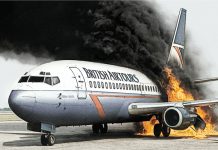Sometimes it’s important to listen to your doubts, even when there seem to be perfectly good explanations for something that just doesn’t feel right, as this close call from 2010 eloquently tells
Name withheld by request
It was a special day. I had graduated with my private pilot’s license two weeks earlier and today I was to set off from Moorabbin for a day trip to Phillip Island with my first passengers. They were my six-year-old son Joseph and a family friend called Beth.
I was aware of the possibilities for carelessness when others (particularly loved ones) were present, so I had done slow, careful nav preparation for the trip in a Cessna 172. I also got Beth to take Joseph away for a bit while I did the walk around. Everything seemed to be in order, so we took some photos to commemorate the occasion and prepared to depart.
I had done the vast majority of my training on the Cessna 152 and seen the nasty side of it (stall characteristics). I guess you could say that therefore I felt relatively relaxed in the 172.
As we taxied to the run-up area the steering felt a little stiff, but I made it around the corners fine (I had always found Cessnas hard to steer). I was also remembering my instructor telling me not to put undue pressure on the 172 rudder pedals on the ground as they (unlike the 152) were connected to the nose wheel. He said this put a lot of pressure on the steering linkages, particularly at low speed.
With this in mind, I put the stiffness in the steering to the back of my mind.
With run-ups safely done, we headed to the 35L threshold. As we were taxiing, I tested the steering again and started to feel uncomfortable with the tightness. Due to my low hours on the 172, I had earlier assumed it had to do with the greater weight, the linkages described earlier, or that was just how a 172 felt. I may have also ignored it due to not wanting to appear incompetent in front of Joseph and Beth!
By the time we reached the threshold, I had to act. Mercifully, there was no one behind me on the taxiway (if there had been, I may have given in to temptation to take off). I idled the engine, put the park brake on and told my passengers: ‘hold on for a second, I just have to check something.’
They say in the CRM stuff that having discovered one mistake, it’s important not to make another …
On exiting the aircraft (which I now know not to do when the prop is spinning), I managed to knock the park brake off with my knee. Mercifully again, I noticed the plane moving fairly quickly, so I jumped back in and secured the brake again (still not switching off though).
On exiting, I discovered the problem immediately. There was a rudder lock faithfully secured to the vertical stabiliser! In the wind provided by the prop, I unwound the wing nut and brought the lock back into the cabin.
My heart was beating hard the whole way over to Phillip Island but thankfully it was an uneventful flight and I managed quite an acceptable approach and landing. Likewise the return.
In the six months since, I have gone over the events of that day a thousand times. Apart from the obvious (my complete stupidity at missing the lock in the walk around), I think the Swiss cheese model did explain part of my error:
- That aircraft was a cross-hire from another school. I had never seen a rudder lock prior to that day, as none of our school’s Cessnas had them.
- The lock was white, the same colour as the vertical stabiliser.
- There was no red tape on the lock which might have caught my attention (no excuse though).
- I was excited at taking my first passengers and was obviously not as attentive to my walk around as I should have been.
- I should have been alerted by the stiffness of the rudder pedals on taxi to the run-up, but the instructor’s words about not turning sharply at low speed in the 172 clouded my judgement.
I certainly now know that if I’m unsure about anything whatsoever, there’s no shame in pulling off a taxiway, shutting down and getting out for a (safe) closer look.
On recollection, the thing that scares me most of all (apart from trying to land in a crosswind with negligible rudder authority) was the possibility of the plane running off while I was outside, with Beth and my precious son in the back. It doesn’t bear thinking about. I guess that’s another reason why they get you to check the idle speed during run-ups!
Calling for close calls
Every pilot has had at least one flight that has taught them a lasting lesson about flying. That’s a close call—a hard-won lesson too valuable to keep to yourself.
Flight Safety Australia wants to hear about your close calls—and we will pay you $500 if yours is published. With our return to printed publication we need more close calls next year. Close calls can be from any sector of aviation—from paragliders to airline transport, including all types of rotary wing aircraft. We would also welcome close calls from aircraft maintainers, ground handlers and cabin crew.
Generally we prefer to hear about recent incidents to ones from many years ago, and civil close calls to military misadventures, but vivid stories with strong safety messages can break both these ‘rules’ and be strong contenders for publication.
Close calls need to be:
- between 450–1400 words
- written in the first person, ‘I’
- written in an active voice, e.g. ‘I lowered the gear’, not ‘the gear was lowered’
- written with a few lines or words of analysis after the event description
- accompanied by a three-line cover sheet consisting of:
- your name
- your email and phone contacts—to send you your money if published. (If you are tremendously confident of your literary prowess, you may include bank account details!)
- your preference to be named or anonymous.
A close call does not have to be an accident or serious incident. Any flight in which the unexpected brought a lesson in its wake qualifies. Take a look at our online close calls archive for examples.
Send your close calls to fsa@casa.gov.au
Flight Safety Australia: back in print
- Flight Safety Australia is available now by subscription from the CASA Online Store for $39.95 for four issues a year, delivered to your door in Australia.
- Subscribe by 25 August to receive the Spring 2019 issue. Subscribers after that date will receive the Summer issue as their first.
- The first 900 subscribers get the gift of a kneeboard, a multitool or a fuel drain (their choice, stocks permitting) with their subscription.
- Subscribe at shop.casa.gov.au






Comments are closed.